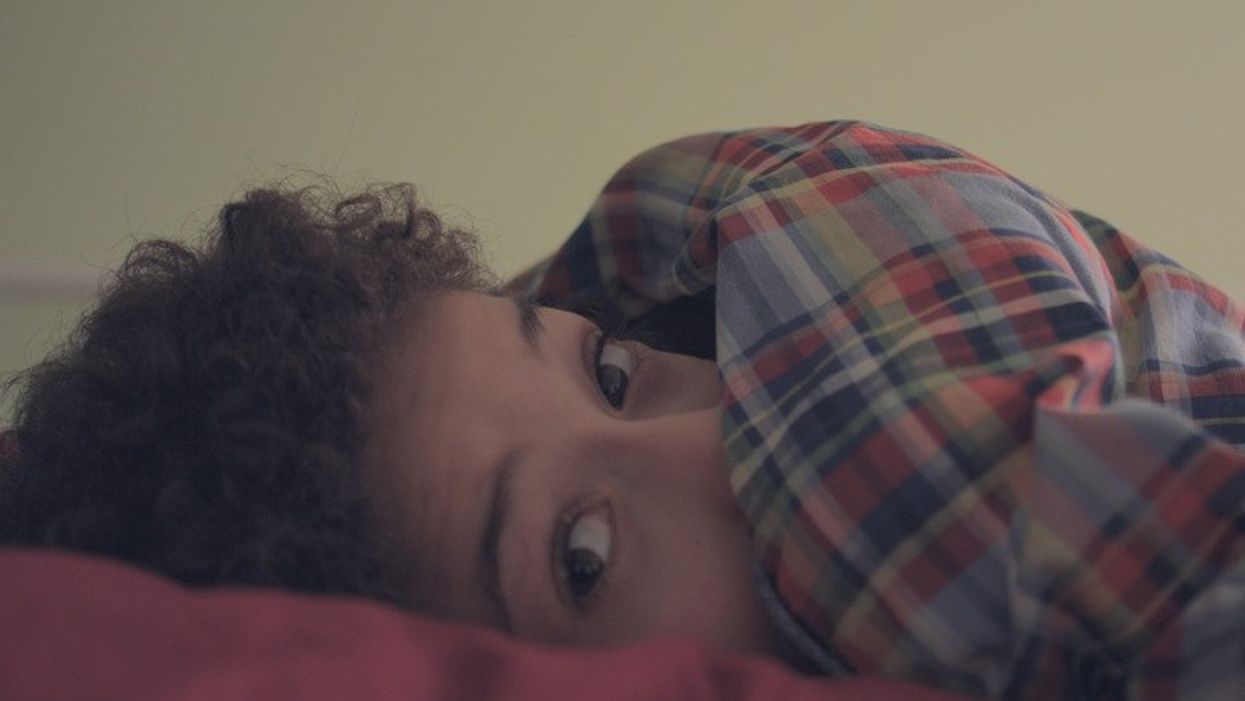5 Tips for Scaring the Bejeezus Out of Your Audience
How can you evoke the audience's primal fears in a horror film?

"The audience's imagination will always be a thousand times scarier than anything you could show," director Ani Simon-Kennedy said in a recent podcast for the BUREAU of Creative Works.
How do you find the right balance between holding back what the audience sees and staying visual? After all, horror can be a lot more than cheap thrills. Humans have been plagued by the fear of death and dismemberment ever since the first conscious creature crawled out of the primordial soup [or insert preferred origin story here]. And until the scientists in David Alvarado and Jason Sussberg’s The Immortalists figure out how to reverse aging, it’s something we all face.
Tapping into the universal experience of being afraid of the unknown can be a cathartic way to materialize our fears onscreen. Simon-Kennedy teamed up with cinematographer-collaborator Cailin Yatsko to experiment with exactly this in her short film Sleep Tight. Here are some horror pointers she learned from experience.
1. Use sound to get the audience to 'lean in'
Sound is one of the most powerful tools in the horror genre because it can conjure unseen images that our imagination can run away with. Deciding when we let the audience hear or not hear something also sets the brain up for a good scare.
"What makes it scary is the sound design and the music, or lack of sound," said Simon-Kennedy. "It's how much people want to lean in, and are then confronted with more sound than they wanted. The highs and lows of it are what makes a film scary. If you turn off the sound, it becomes suddenly way less scary."
2. Use close-ups to skew perspective
By restricting the frame through a series of close-ups, you can make an audience very uneasy. When you can’t see a complete picture of what’s happening around you, your imagination has more room for fear.
"We wanted to use as few wides as possible," said Simon-Kennedy. "We wanted to keep it claustrophobic—then you don't know what it is that you're not seeing outside of the frame."

3. Stay tight on actors' faces to experience minutiae of fear
In addition to creating a sense of suspense in surroundings, a close-up on an actor allows for subtle performance. And what’s scarier than the slow, creeping look of fear on a character’s face when you have no idea what he or she is looking at? Says Cailin:
"There's something so great about a close up on an actor's face that lets you see the most minute facial expression. When she looks over her shoulder into the closet, that's how you read the fear. Gasps and big emotions but in these really small moments that read so much better in a close-up."
4. Use framing and color to enhance the uncanny
Freud’s concept of the ‘uncanny’ is one that has long resonated in the horror genre by taking something familiar and making it feel slightly off for a creepy effect that lingers. How do you make that uncanny shift?
"If you look at our lookbook, the images themselves of the bedroom aren't scary or threatening-looking," said Yatsko. "It's more just like a natural bedroom environment, but using angles and the framing makes them feel off. That's the look that we wanted to go for."
The crew used colored lighting to enhance the experience of the dark bedroom. "We had never shot with the Blackmagic Camera that was loaned to us, so that was a fun test to play around with," said Yatsko. "I think we wanted to use the colored lighting to make it a little more ominous and abnormal feeling visually. Coming from the warm when the lights are on and mom's there and it's safe, and going to that cold, dark palette."
5. Know why your audience should be scared
When you tap into something universal that haunts people in the dark of night, you’ve got a powerful tool that can be used for more than a spook.
"I think horror specifically is about this catharsis, where you're having your scary thoughts that live in your brain represented on screen," said Simon-Kennedy. "It gives it a tangible form that you can then face in a slightly more real way, but within this very safe, confined, controlled environment. There is something interesting about The Shining or Rosemary's Baby. Movies that are within the horror genre but are really about psychological fears stay with you and become this timeless primal fear."
Check out the full conversation with Simon-Kennedy and Yatsko if you’re looking to experiment with scary movies and get some inspiration for yourself.












